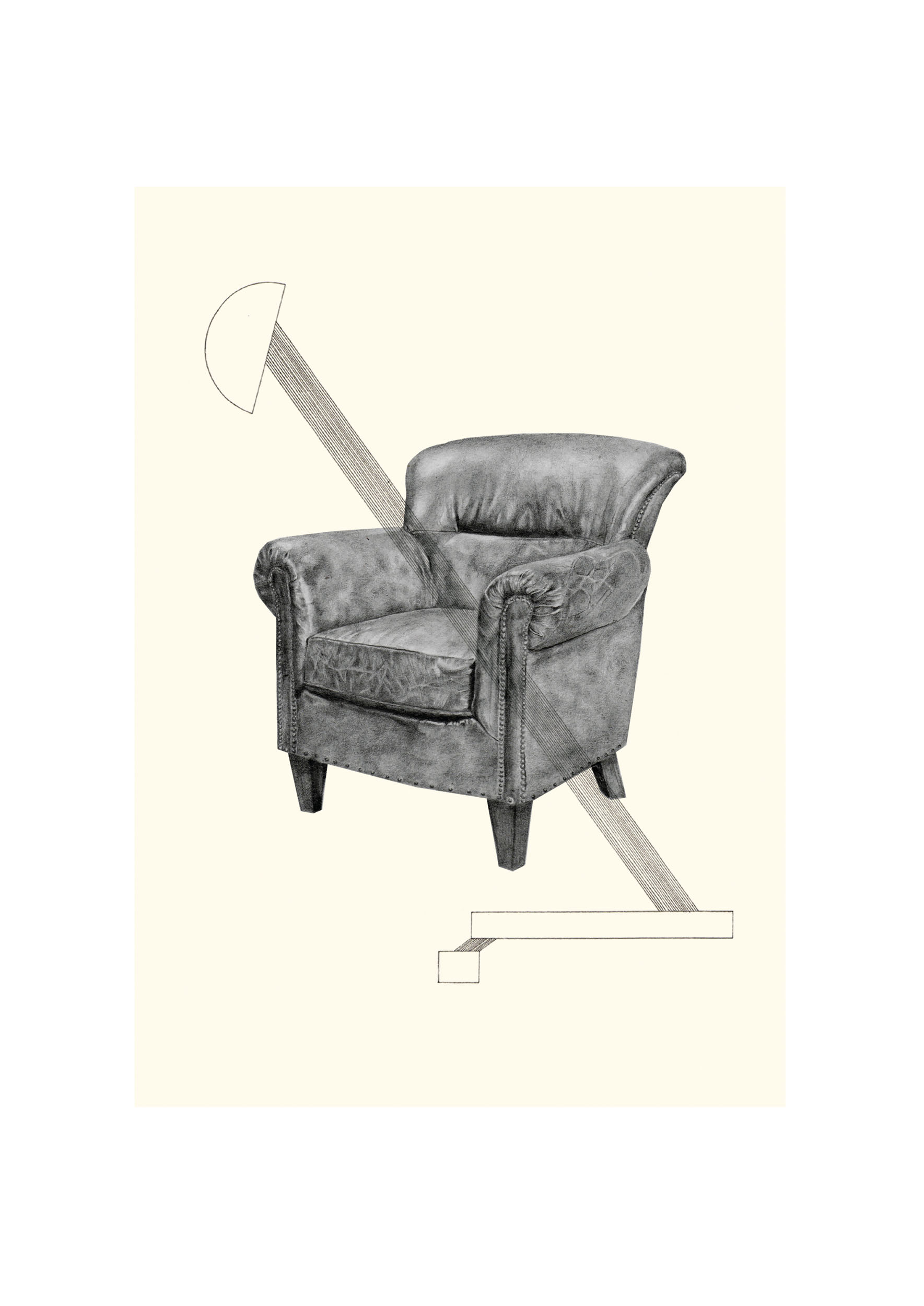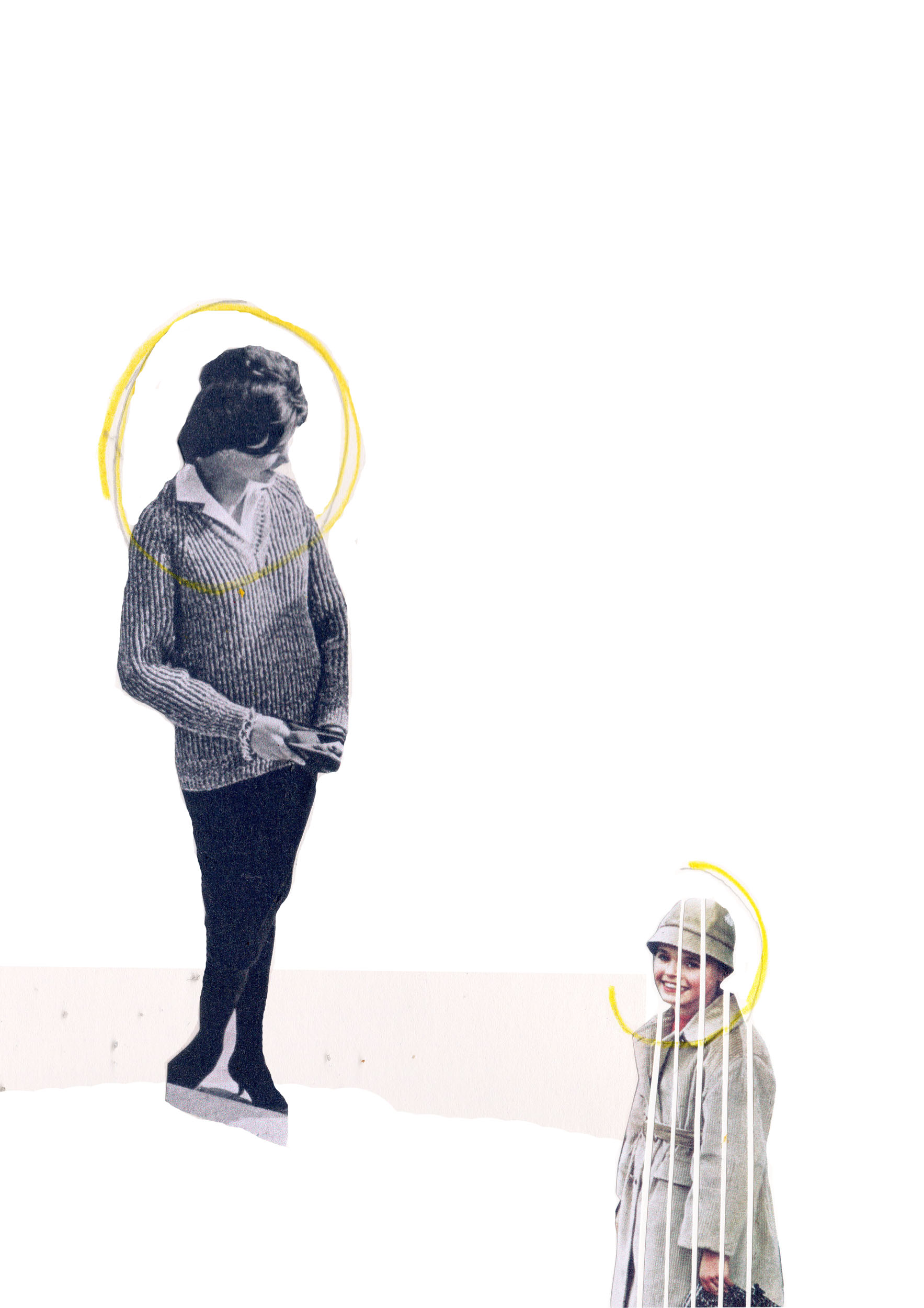












A interest in science and philosophy drives the work of this London-based illustrator, who expertly layers images from the 60s and 70s to create strikingly contemporary visuals. What drew you to start using collage in your work?
I’m hugely inspired by photomontage artists such as Peter Blake, Richard Hamilton, Hannah Hoch and Raoul Hausmann. I find composition is the key element when making an image from this medium. The above artists have the skill to make their work sit perfectly on the page, as though the images or photographic reproductions they have used were always meant to be cut out and stuck in that specific place and would not have worked anywhere else on the page. A great collage or photomontage looks effortless when in most cases a huge amount of consideration has gone into it.
You describe your approach as problem-solving. How does that play out in practice?
Essentially, I illustrate scientific and philosophical ideas, concepts and problems. I see the ‘problem’ as the idea that I am going to depict. I want to represent this problem to people through a visual piece of work that must be aesthetically pleasing and intellectually stimulating. Finding a way of doing this is the ‘solving.' I have to bring something new to the table: my take on an idea has to be one that has not previously been expressed visually. Interpretation comes into play, as it’s important not to let my own subjectivity override the audience and thus risk the work becoming lost on the viewer. In essence, it's a balance. If the audience understand the piece, learn something new and appreciate its visual aesthetic, then I have solved the problem.
Where do you find the images to use in your work?
Notting Hill's Book and Comic Exchange and Archive Books in Marylebone are my favourite shops to hunt for source material. The Book and Comic Exchange has old copies of Elle magazine from the 60s and 70s. I like to use them because the colour and style of the print is something that is particular to that period and isn't used anymore. There’s something about the non-glossy, faded look that works so well in photomontage. I use Archive Books to gather images of interiors, furniture and rooms, which I played with quite heavily within my final major project. Again these books tend to date back to the 60s and 70s.
Tell us about a project you’re working on at the moment.
Something that’s very different to what I’ve done before in terms of content is Natural Selection Box, a project I’m working on about popular science. It involves illustrating natural selection through drawings of animal shaped biscuits. It is a play on the traditional selection box which usually consists of chocolates or biscuits. Half of the biscuits are shaped like living animals and the other half are extinct species. The living animals are plain like a digestive biscuit and the extinct are decadent and covered with chocolate and icing. The idea is that the extinct animals will be eaten first as they are the most appealing, making them extinct. The plain animals however, will be left in the box and eaten last. I’ve even made the biscuits myself so I can draw from them.
What would be your dream commission?
Probably working on something for the Wellcome Collection – the gallery on Euston Road where biological sciences meet the visual arts, and artists and scientists collaborate to make novel interdisciplinary work. Its collection is a huge inspiration for me.
charlottewhiston.co.uk

